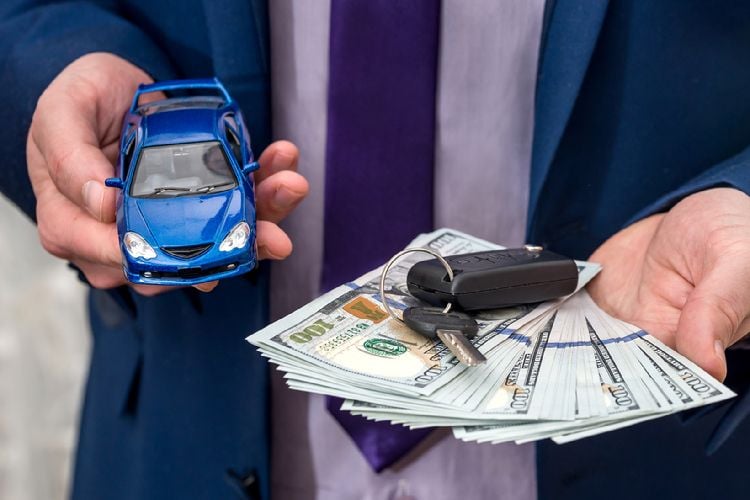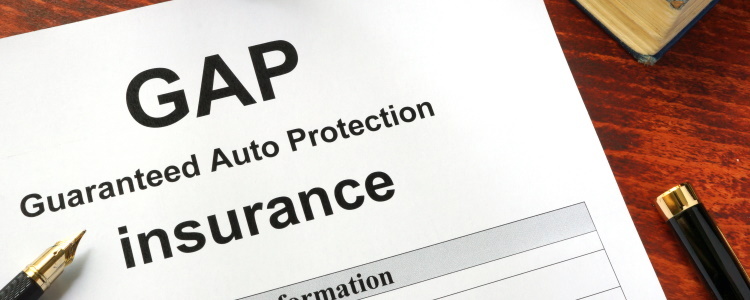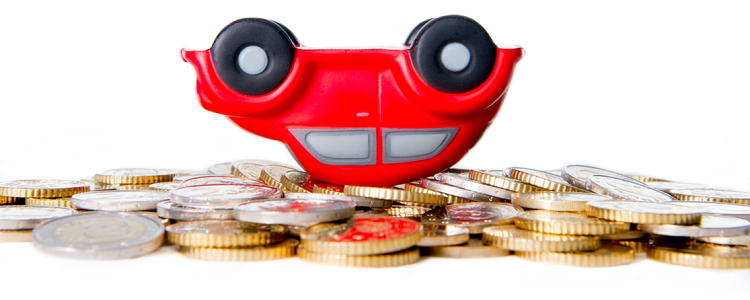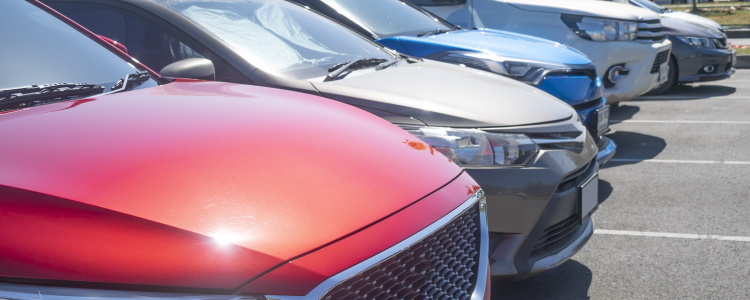Why Care About Negative Equity?
If you have negative equity – also called being upside down or underwater – it simply means that you owe more on your car loan than the vehicle is worth. Typically, this only becomes a problem when you want to trade your car in or sell it. In these cases, having negative equity means you're still going to owe the lender, even if you do sell your vehicle.
But, there's another reason not to remain upside down that many people often overlook: the possibility of losing your car due to an accident. If your vehicle is totaled, insurance only pays the value of the car, so you're still responsible for paying any loan balance. This is one reason why it's always a good idea to have GAP insurance when financing a vehicle.
Knowing Your Equity Position

If you don't know your equity position, here's how to figure it out: use online valuation tools such as Kelley Blue Book or NADAguides to get an estimated value of your car. You can, and should, also take your vehicle to a franchised dealership for an appraisal to find out its actual cash value (ACV). Once you know how much it's worth, you can compare this to your loan balance.
If the ACV of your car is higher than the total you owe on the loan, this means there's equity in your vehicle, so congratulations! But, what does it mean to have equity and is this important?
What it Means to Have Equity in Your Car
Having, and keeping, equity is important because when there's equity in your car, it means that value can be turned into cash if you trade in or sell it. Remember, the vehicle isn't yours until the loan is paid off.
Let's look at an example:
- If you owe $8,000 on a car loan and can only sell the car for $6,000, you have $2,000 of negative equity you owe the lender.
- However, if you owe $6,000 on an auto loan and are able to sell the vehicle for $8,000, you have $2,000 in equity that you can pocket or use as a down payment on your next car.
In some cases, the option exists to roll negative equity into your next loan. Not all lenders allow this, and it's not the best idea if you're struggling with poor credit. Ultimately, you end up paying more in principal and interest charges by adding negative equity to a new loan. For this reason, it's better if you can cover any negative equity out of pocket instead of rolling it into a new loan.
Can You Save Money with Leasing?
It seems that car shoppers who are primarily concerned with driving the newest vehicles don't mind the idea of always having a car payment. But by rolling negative equity over into new loans every two or three years, these buyers are doing nothing to end their underwater status.
It also seems likely that the consumers who are permitted to do this have at least decent credit. If this is the case, leasing would probably be a good alternative. Edmunds data suggests that these types of shoppers would save a significant amount of money every month if they opted to lease.
For example, the average monthly payment on a new car purchase was around $726 in the third quarter of 2023. The average lease payment, on the other hand, hovers at about $597. So, by switching to a lease program, new vehicle buyers might save approximately $129 every month. Yes, they will always have a car payment. But the same will be true if they keep financing with underwater trade-ins.
Bad Credit Car Buyers, Underwater Trade-Ins and Leasing
First of all, the best advice that can be given to bad credit buyers is that they should work on repairing their credit before going after their dream cars. As long as they have an affordable and reliable vehicle to drive, fixing their credit should come first.
Also, it may be difficult for consumers with damaged credit to trade in a vehicle in which they're underwater. This is because the kinds of lenders that can work with bad credit buyers have certain rules. For instance, they will typically only approve a loan for the total price of the car being purchased and no more. So, for these customers, rolling over negative equity might not be an option.
When it comes to leasing with bad credit, depending on several factors, it may be possible. Depending on inventory levels, some captive finance companies are known to "buy deep" from time to time. This means that lease applicants with lower credit scores might be approved for lease contracts. Of course, whether or not you will be approved by a lender that is doing this will depend on the severity of your bad credit.
It is also good to know that lenders typically use a tiered system when assigning lease rates. Lessees with the best credit are assigned the best rates. However, if you have bad credit, you will fall into a lower tier. This means that it will be more expensive for you to lease a vehicle.
Options for Underwater Car Loans
When you owe more money on your loan than the car is worth, you have negative equity. If you have negative equity in your vehicle, you can sometimes still trade it in using one of these three options:
- Pay the difference – If you’re able to, you should pay off the negative equity. To do this, get the loan payoff from your lender and look up your vehicle’s current value through a valuation guide such as NADA. Subtract these two values, and that number is the approximate amount you’ll need.
- Roll the difference over – If the lender gives you the option to roll over the difference, you could do this as well. The issue with rolling over negative equity into a new loan is that it doesn’t go away, but increases the amount of your new loan and results in you paying interest on it. You’ll also be even more underwater on your new car, which could leave you this way for longer.
- Wait to trade it in – If neither of the two suggestions above are options, the last option is to wait until your negative equity has been eliminated before trading it in.

How to Get Out of an Upside-Down Car Loan
If you want to get out of being upside down before trading in a car, you’ll need to eliminate any negative equity. If, after crunching the numbers, you know you won’t be able to pay it off all at once, there are three alternatives to think about:
- Talk to your lender – One of the first things you should do is contact your lender and explain your situation. Discuss how you can get yourself out of being upside down – possibly by refinancing the vehicle and lowering the interest rate. If it’s a simple interest loan (most are), you can pay more each month without penalty which will also reduce negative equity faster.
- Consider a personal loan – If the interest rate on a personal loan is lower than your car’s current loan, consider taking out a personal loan. In this case, you could use the personal loan to either pay off the car or eliminate the negative equity. Just make sure you can financially handle this.
- Consider selling the car privately – If you’re unable to use your car as a trade-in, and you want to get rid of the negative equity, selling the vehicle privately is one of the best ways to do this. When you sell a car privately, you may be able to sell it for more than the dealer offered, making it easier to pay off. Make sure you can sell the vehicle at a price that’ll allow you to reasonably sell it while minimizing (or eliminating) the amount you need to cover out of pocket.
A Realistic Plan for Bad Credit Car Buyers
If you have bad credit and are working toward improving your credit scores, you should be thinking practically when it comes to your next vehicle purchase. If you need to buy a car, an affordable, recent-model used car with high ratings would be a good option.
With this kind of purchase, you can gradually improve your credit by making timely payments on your auto loan. With the lower payments that should come with your modestly priced vehicle, you can also save money. So, once your car loan is paid off, you should be in a much better position.
Auto Credit Express can help you take the first step toward getting the car you need and the credit you want. We can match you with a dealership in your area that can give you a better chance at auto loan approval.

















